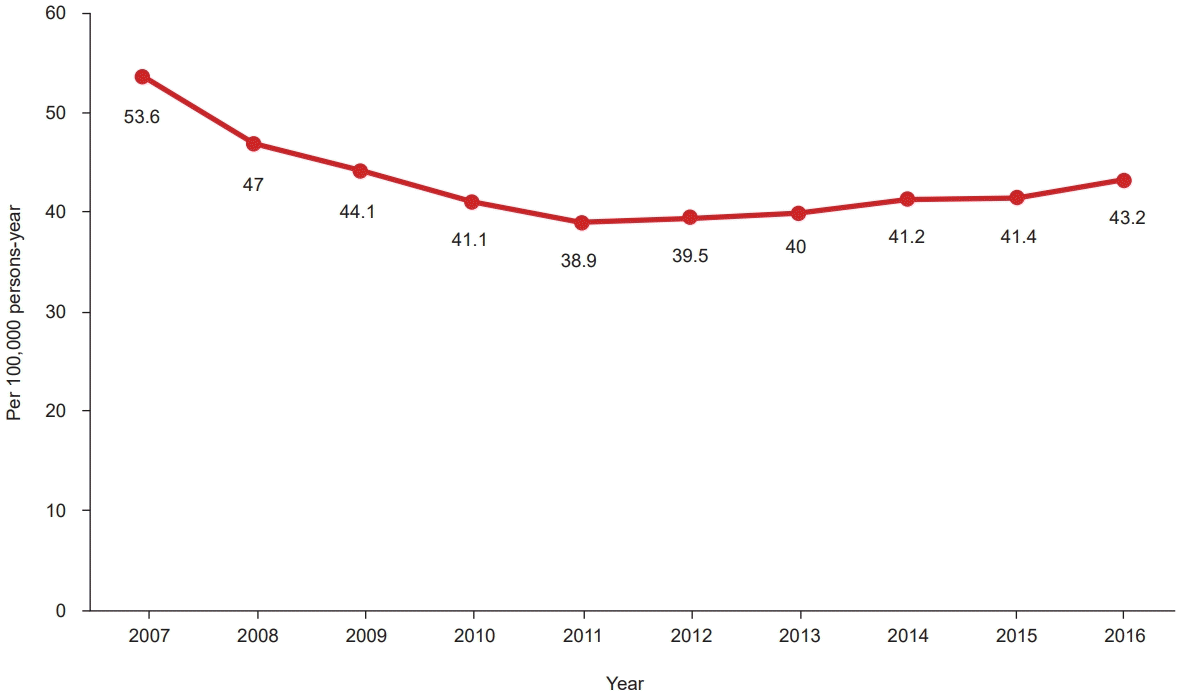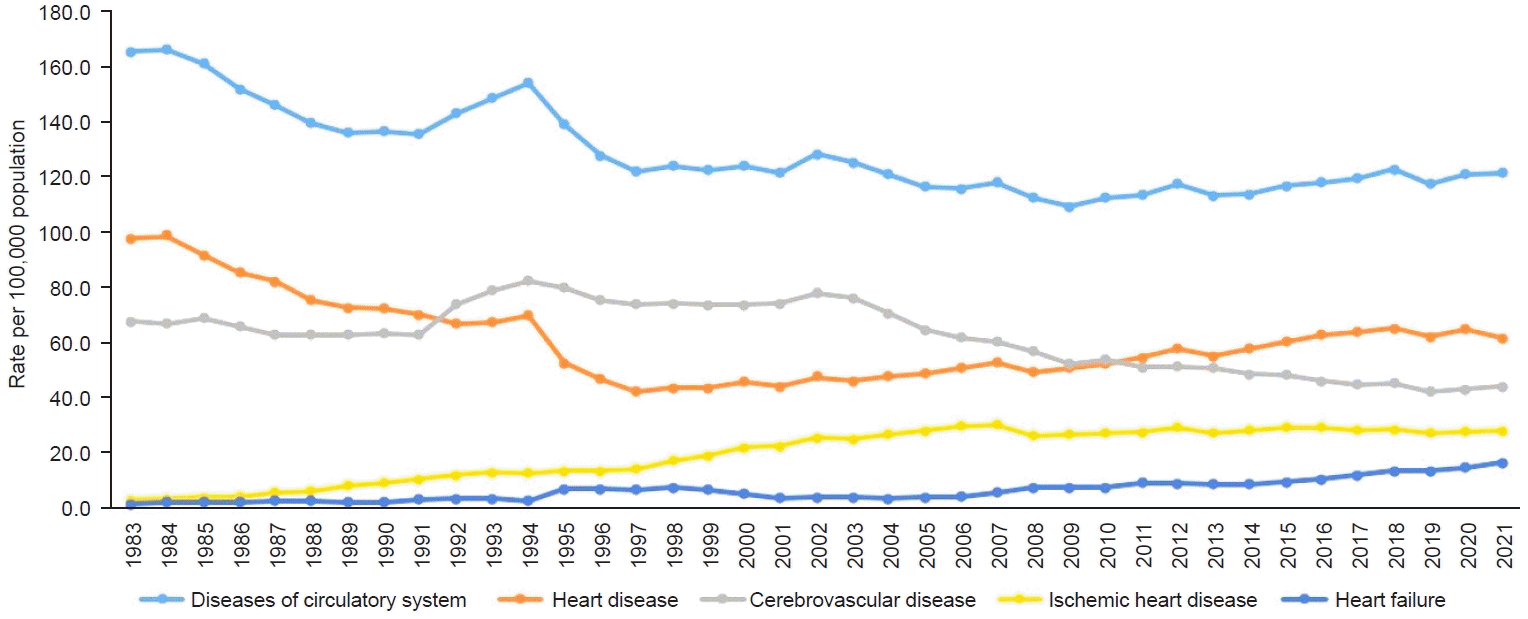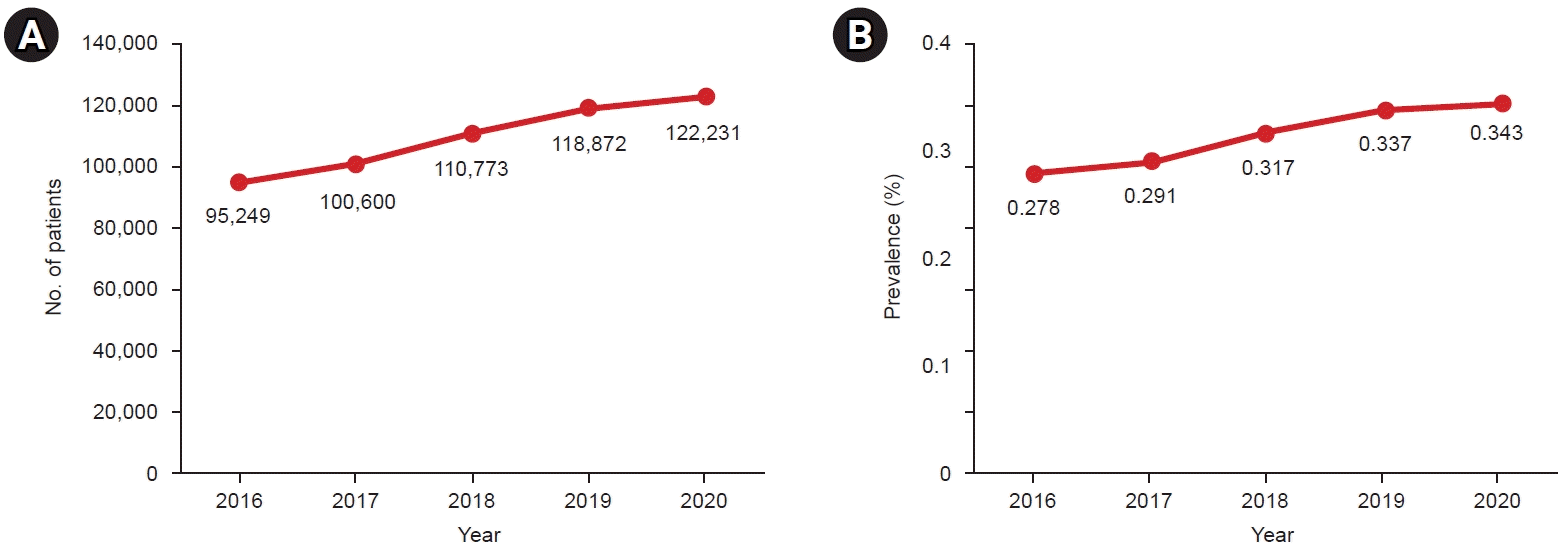1. Bergmark BA, Mathenge N, Merlini PA, Lawrence-Wright MB, Giugliano RP. Acute coronary syndromes. Lancet. 2022; 399:1347–58.

2. Kim HC. Epidemiology of cardiovascular disease and its risk factors in Korea. Glob Health Med. 2021; 3:134–41.

3. Townsend N, Kazakiewicz D, Lucy Wright F, Timmis A, Huculeci R, Torbica A, et al. Epidemiology of cardiovascular disease in Europe. Nat Rev Cardiol. 2022; 19:133–43.

4. Duggan JP, Peters AS, Trachiotis GD, Antevil JL. Epidemiology of coronary artery disease. Surg Clin North Am. 2022; 102:499–516.

5. Ralapanawa U, Sivakanesan R. Epidemiology and the magnitude of coronary artery disease and acute coronary syndrome: a narrative review. J Epidemiol Glob Health. 2021; 11:169–77.

6. Taylor RS, Dalal HM, McDonagh STJ. The role of cardiac rehabilitation in improving cardiovascular outcomes. Nat Rev Cardiol. 2022; 19:180–94.

7. Kim C, Sung J, Lee JH, Kim WS, Lee GJ, Jee S, et al. Clinical practice guideline for cardiac rehabilitation in Korea. Ann Rehabil Med. 2019; 43:355–443.

8. Kim C, Choi I, Cho S, Kim AR, Kim W, Jee S. Do cardiac rehabilitation affect clinical prognoses such as recurrence, readmission, revascularization, and mortality after AMI?: systematic review and meta-analysis. Ann Rehabil Med. 2021; 45:57–70. Erratum in: Ann Rehabil Med 2021;45:165.

9. Kim C, Choi HE, Jang JH, Song JH, Kim BO. Do patients maintain proper long-term cardiopulmonary fitness levels after cardiac rehabilitation? A retrospective study using medical records. Ann Rehabil Med. 2021; 45:150–9.

10. Kim C, Choi I, Cho S, Han JY, Kim AR, Kim WS, et al. Cardiac rehabilitation and 5-year mortality after acute myocardial infarction. Report from 11 tertiary hospitals in Korea (ETHIK Study). Eur J Phys Rehabil Med. 2020; 56:489–95.

11. Park MS, Lee S, Ahn T, Kim D, Jung MH, Choi JH, et al. Current status of cardiac rehabilitation among representative hospitals treating acute myocardial infarction in South Korea. PLoS One. 2021; 16:e0261072.

12. Kim RB, Kim HS, Kang DR, Choi JY, Choi NC, Hwang S, et al. The Trend in Incidence and Case-fatality of Hospitalized Acute Myocardial Infarction Patients in Korea, 2007 to 2016. J Korean Med Sci. 2019; 34:e322.

13. Kim RB, Kim JR, Hwang JY. Epidemiology of myocardial infarction in Korea: hospitalization incidence, prevalence, and mortality. Epidemiol Health. 2022; 44:e2022057.

15. Kim Y, Ahn Y, Cho MC, Kim CJ, Kim YJ, Jeong MH. Current status of acute myocardial infarction in Korea. Korean J Intern Med. 2019; 34:1–10.

16. Simon M, Korn K, Cho L, Blackburn GG, Raymond C. Cardiac rehabilitation: a class 1 recommendation. Cleve Clin J Med. 2018; 85:551–8.

17. Epstein E, Maisel S, Maysent K, Taub PR. Cardiac rehabilitation for coronary artery disease: latest updates. Curr Opin Cardiol. 2021; 36:556–64.

18. Kweon S, Sohn MK, Jeong JO, Kim S, Jeon H, Lee H, et al. Quality of life and awareness of cardiac rehabilitation program in people with cardiovascular diseases. Ann Rehabil Med. 2017; 41:248–56.

19. Kim C, Sung J, Han JY, Jee S, Lee JW, Lee JH, et al. Current status of cardiac rehabilitation in the Regional Cardiocerebrovascular Centers in Korea. J Clin Med. 2021; 10:5079.
20. Baek S, Ha Y, Mok J, Park HW, Son HR, Jin MS. Community-based cardiac rehabilitation conducted in a public health center in South Korea: a preliminary study. Ann Rehabil Med. 2020; 44:481–92.

21. Kim SH, Ro JS, Kim Y, Leigh JH, Kim WS. Underutilization of hospital-based cardiac rehabilitation after acute myocardial infarction in Korea. J Korean Med Sci. 2020; 35:e262.

22. Kim C, Sung J, Han JY, Jee S, Lee JW, Lee JH, et al. A comparison of barrier factors between hospitals with and without cardiac rehabilitation programs in Korea: a nation-wide survey research. J Clin Med. 2022; 11:2560.

23. Im HW, Baek S, Jee S, Ahn JM, Park MW, Kim WS. Barriers to outpatient hospital-based cardiac rehabilitation in Korean patients with acute coronary syndrome. Ann Rehabil Med. 2018; 42:154–65. Erratum in: Ann Rehabil Med 2019;43:119.

24. Kim C, Kwak HB, Sung J, Han JY, Lee JW, Lee JH, et al. A survey of the perceptions of barriers to and facilitators of cardiac rehabilitation in healthcare providers and policy stakeholders. BMC Health Serv Res. 2022; 22:999.

25. Kim C, Sung J, Han JY, Jee S, Lee JW, Lee JH, et al. Evaluation of current resources available for community-based cardiac rehabilitation in Korea: a nationwide survey study. J Korean Med Sci. 2022; 37:e109.








 PDF
PDF Citation
Citation Print
Print



 XML Download
XML Download